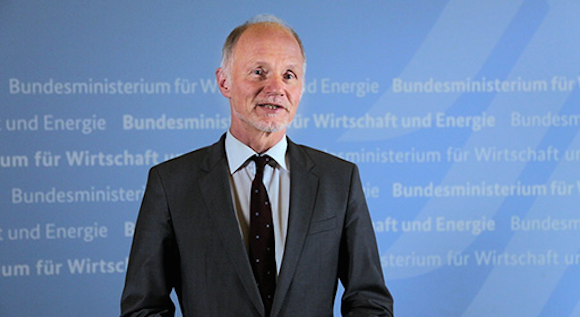Has 2015 been a good year for Germany’s energy reforms?
State Secretary Baake said in the interview: “Renewables are now our number-one source of electricity. But this also means that time is over for funding for the underlying technologies.” Furthermore, State Secretary Baake highlighted the most important measures that have been taken this year, and revealed what will happen next.
 © BMWi
© BMWi
Electricity market 2.0, more effort to combat climate change, priority for underground cables, strategy for climate-neutral buildings, and the digital energy transition: 2015 was a good year for Germany’s energy reforms. But what has actually happened in all of these areas? It’s time for a review.
Electricity market 2.0: a flexible and secure supply
How can we improve the way renewables are integrated into the electricity market? And how will our energy supply remain secure and affordable? In 2015, this question has been at the heart of the debate about the electricity market of the future (dubbed ‘electricity market 2.0’), which the cabinet adopted in the autumn.
The electricity market 2.0 will be more market-based and aims to tackle several challenges at once: it needs to maintain an efficient supply of electricity in the face of growing shares of renewables, whilst ensuring energy security.
Minister Sigmar Gabriel has called the planned Electricity Market Act the “core of the energy transition”, as it will make the electricity market 2.0 a reality. The Act puts a thoroughly market-based regulatory framework in place for the electricity market of the future. This is the largest reform of the electricity market since the energy markets were liberalised in the 1990s, and it will make the electricity market fit for the 21st century. It takes a European approach to energy security and ensures optimal integration of renewable energy into the market.
Cutting lignite-fired power generation to help the climate
One important aspect of the electricity market 2.0 is that the electricity sector will be making a greater contribution to combating climate change. To this end, particularly old and inefficient lignite-fired power stations will be placed on “security stand-by” and decommissioned after four years. The scheme will start next year. Switching off the lignite-fired power stations will cut Germany’s carbon emissions by up to 12.5 million tonnes. This will help to implement the decision taken by the coalition leaders at last summer’s energy summit: the electricity sector will be cutting its emissions by 22 million more tonnes of CO2 than originally planned.
Speeding up the expansion of the grids
Also, the cabinet gave the go-ahead for plans to build more underground cables instead of overhead powerlines. In future, the new electricity highways - high-voltage direct current (HVDC) transmission lines - will mainly be placed underground rather than overhead. This applies in particular to the large transmission lines running from North to South such as ‘SuedLink’ or ‘Gleichstrompassage Süd-Ost’ (South-eastern DC route).
Strategy for a climate-neutral building stock
For the energy transition to be a success, it is also important to use the great potential for energy conservation that lies untapped in our many unmodernised buildings. Buildings account for around 35 per cent of Germany’s total final energy consumption, and most of this energy is used for heating and hot water. Since roughly half of Germany’s building stock will need modernising over the next two decades, it makes sense to improve the energy performance at the same time.
The Federal Government wants all the buildings to be virtually carbon-neutral by 2050 - i.e. they should emit hardly any CO2. This autumn, the Federal Cabinet adopted a roadmap detailing exactly how to achieve this: the ‘Energy Efficiency Strategy for Buildings’.
Digitising the energy transition
The cabinet also laid the foundations for the digitisation of the energy transition in 2015. What this means is that more and more smart metering systems are to help make the energy system fit for the energy transition.
They are better equipped to integrate power from renewable energy into the electricity market and make it easier to reconcile supply and demand. Also, they let people see how much energy they are using, and thus motivate consumers to save energy.
The installation of smart metering systems will be phased in from 2017. The plan is to start with large-scale users with an annual electricity consumption exceeding 10,000 kilowatt-hours (kWh), and generators with an installed capacity of between 7 and 100 kilowatts (kW). From 2021, consumers with an annual electricity consumption of between 6,000 and 10,000 kWh are to follow. By comparison: an average four-person household in Germany consumes 4,400 kWh a year.
Monitoring makes sure that everything is seen in context
If you want to find out how the overall energy transition is progressing, the fourth Monitoring Report on the Energy Transition (in German, summary available in English) will tell you. It was adopted by the cabinet just a few weeks ago.

